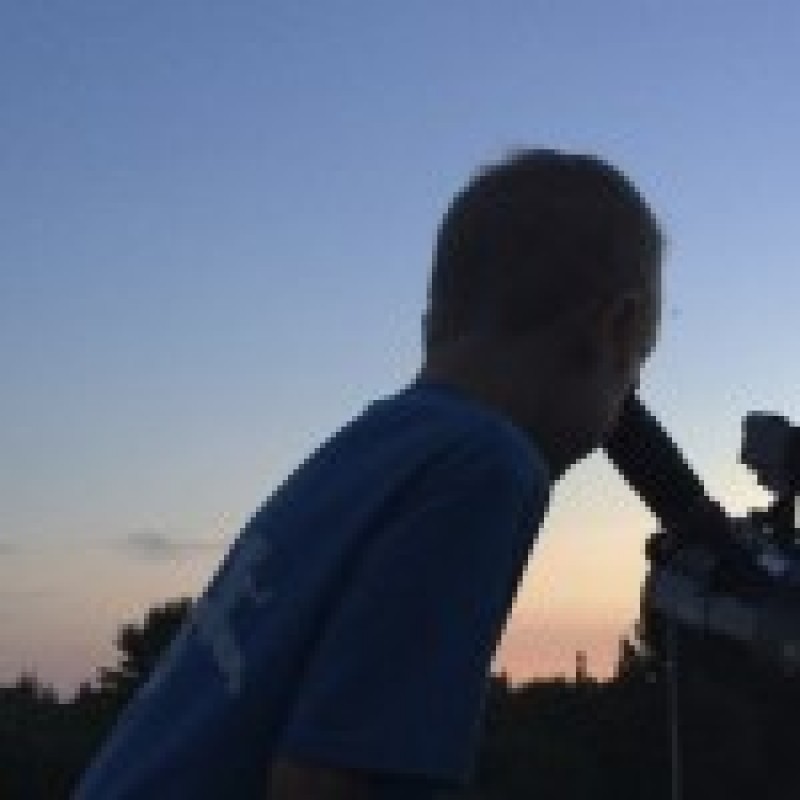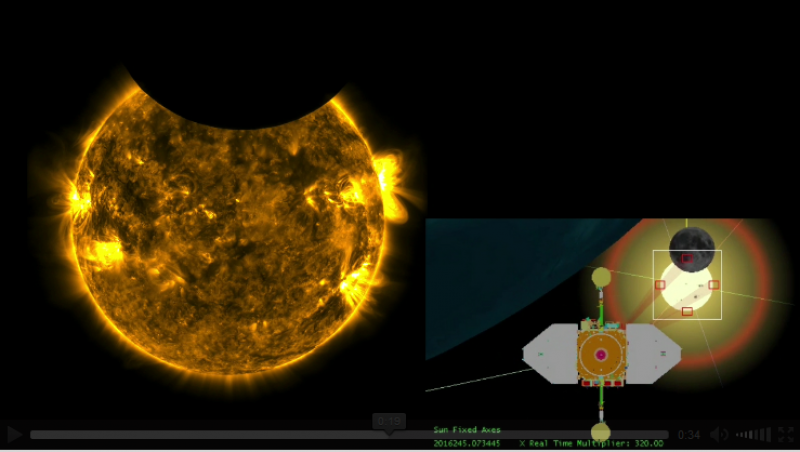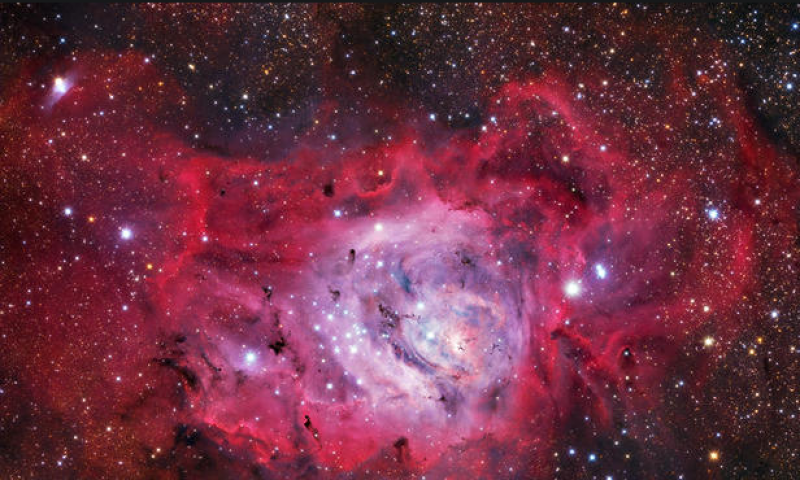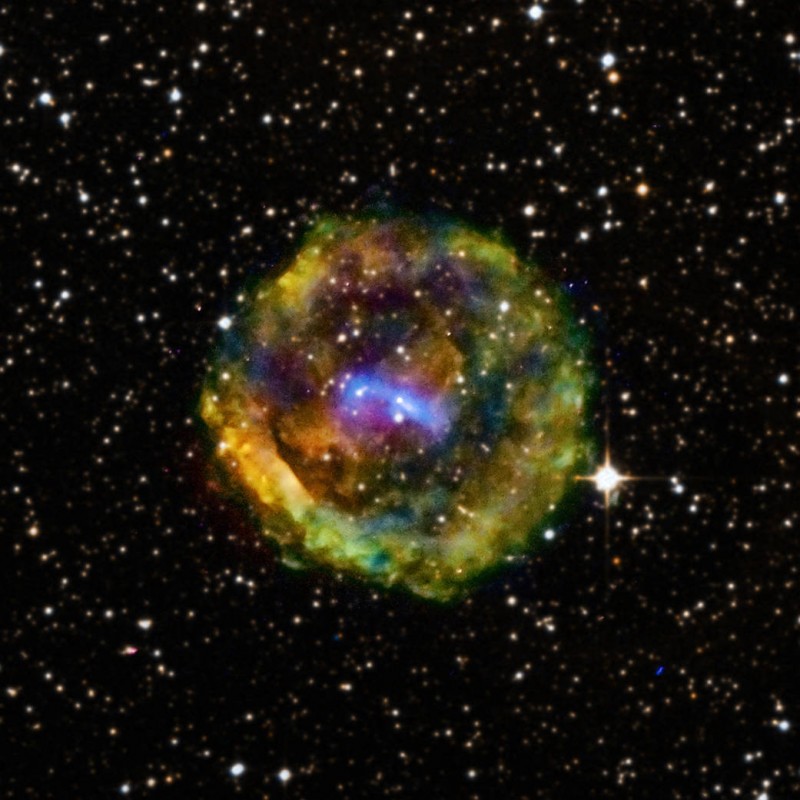Blog
Gaia’s Billion-Star Atlas Will Revolutionize Astronomy
Friday, September 16th 2016 09:12 PM
Astronomers around the world got a gift today—the first batch of data from Europe’s Gaia satellite, which for the past 14 months has been mapping the stars in our Milky Way galaxy and its neighborhood with unprecedented accuracy.
This first of five data releases from the five-year mission has already yielded some surprises. Our close galactic neighbor, the Large Magellanic Cloud, appears to be larger in extent, with more stars in the outskirts, than astronomers had previously thought. The same is likely true of the Milky Way.
Milky Way over Black Rock Desert, Nevad, a 54 second exposure taken with a tripod mounted Cannon EOS 5D digital camera with a 16mm lens, wide open at f2.8 and ISO800 by Steve Jurvetson - Flickr
That’s just a hint of the expected scientific yield from the Gaia atlas, which will be unmatched in precision and completeness. The catalog contains more than 1.1 billion stars, or approximately one percent of the number tho...
Read More
Read More
VIDEO: 1993 Interview with John Dobson
Thursday, September 15th 2016 04:22 PM
John Dobson, 1915 - 2015, is credited with a design of telescope that allows amateur astronomers maximum light gathering at an affordable price. He also advocated home building of his designs to save money. Of course, telescope manufacturers quickly discovered that what can be built cheaply at home can also be built still more cheaply in a factory. Hense, Dobsonian telescope/mount combinations are available at astonishing prices. See video below.
A Dobsonian telescope is an alt-azimuth mounted Newtonian telescope design popularized by John Dobson starting in the 1960s credited with vastly increasing the size of telescopes available to amateur astronomers . Dobson's telescopes featured a simplified mechanical design that was easy to manufacture from readily available components to create a large, portable, low-cost telescope. The design is optimized for visually observing faint deep sky objects such as nebulae. This type of observation requires a large ob...
Read More
Read More
Does Your Library Loan Telescopes?
Tuesday, September 13th 2016 06:20 PM
Amateur astronomers around the country, usually as members of clubs or state associations of clubs, are teaming up with manufacturers like Orion, Meade and Celestron and with science education advocacy groups, such as Cornerstones of Science, in New Hampshire, to provide funding to buy and donate telescopes to local libraries to be lent out, just like books.
Since libraries usually lack expertise in astronomy, amateur astronomers as members of clubs, provide that expertise in the form of user manuals and teaching for librarians. That usually ends up creating entire astronomy sections in libraries where they didn’t exist before.
Here’s how the Cornerstone and New Hampshire Astronomical Society’s (NHAS) STAR (Sharing Telescopes and Astronomical Resources) program works:
The telescopes chosen are usually simple, robust Dobsonians, like Meade LightBridge 5 inch or Orion StarBlast 4.5 inch telescopes, in the $200 to $300 range, with simple, sturdy table top...
Read More
Read More
Solar Dynamics Observatory Experiences Double Eclipse of Earth and Moon
Friday, September 9th 2016 06:09 PM
Early in the morning of Sept. 1, 2016, NASA’s Solar Dynamics Observatory, or SDO, caught both the Earth and moon crossing in front of the sun. SDO keeps a constant eye on the sun, but during SDO’s semiannual eclipse seasons, Earth briefly blocks SDO’s line of sight each day – a consequence of SDO’s geosynchronous orbit. On Sept. 1, Earth completely eclipsed the sun from SDO’s perspective just as the moon began its journey across the face of the sun. The end of the Earth eclipse happened just in time for SDO to catch the final stages of the lunar transit.
In the SDO data, you can tell Earth and the moon’s shadows apart by their edges: Earth’s is fuzzy, while the moon’s is sharp and distinct. This is because Earth’s atmosphere absorbs some of the sun’s light, creating an ill-defined edge. On the other hand, the moon has no atmosphere, producing a crisp horizon.
See the video here: http://svs.gsfc.nasa.gov/12292#42786
Read More
Read More
Who Knew? Trekkies Love Astronomy
Tuesday, September 6th 2016 11:58 PM
Salt Lake Comic Con, held annually in the first week of September, is a major science fiction and pop culture convention that brings together celebrities and fans of science fiction and fantasy fiction – such as Star Wars, Star Trek, Doctor Who, Harry Potter, Firefly, The Walking Dead and more. The attendees are well known for showing up in costume … and often in character.
And guess what … when members of the Utah Valley Astronomy Club, made up of amateur astronomers, set up a booth and held seminars, they were swamped. Well, of course.
While the bulk of the events and panels at the convention were still solidly based in the fictional world, the Utah Valley Astronomy Club held a panel on science behind the discovery of planets beyond our solar system.
The panel was packed, with even the standing room all taken up by convention-goers, said Arthur Saraiva, a member of the Utah Valley Astronomy Club. Most of the attendees...
Read More
Read More
Latest SETI Intercept Signal Turns Out to Be Wrong Number
Friday, September 2nd 2016 07:20 PM
For a moment or two, news of a strong signal originating from the constellation Hercules thrilled amateur astronomers and pros alike with the prospect of a big fat “hello” from someone or something in deep space. For a moment or two. Then there was the flat letdown of a butt-dialed wrong number.
Russian astronomers at Moscow State University and the Russian Academy of Sciences detected the signal last week as part of the Russian effort supporting the international SETI program. (Searth for Extraterrestrial Intelligence.) As required to do by mutual agreement with everyone else in the SETI program, whenever a signal is detected they’re supposed to release the news to the media.
And the media, of course, acted responsibly and soberly and filled all their reports with caveats that the signal could be generated by natural forces. Not. It was a sensation, but momentary.
The Russians released the following statement:
“On August 30, 2016 there...
Read More
Read More
Scientists discover a ‘dark’ Milky Way
Tuesday, August 30th 2016 04:54 PM
The dark galaxy Dragonfly 44. The image on the left is from the Sloan Digital Sky Survey. Only a faint smudge is visible. The image on the right is a long exposure with the Gemini telescope, revealing a large, elongated object. Dragonfly 44 is very faint for its mass and consists almost entirely of dark matter. (Images by Pieter van Dokkum, Roberto Abraham, Gemini, Sloan Digital Sky Survey)
Using the world’s most powerful telescopes, an international team of astronomers has found a massive galaxy that consists almost entirely of dark matter.
The galaxy, Dragonfly 44, is located in the nearby Coma constellation and had been overlooked until last year because of its unusual composition: It is a diffuse “blob” about the size of the Milky Way, but with far fewer stars.
“Very soon after its discovery, we realized this galaxy had to be more than meets the eye. It has so few stars that it would quickly be ripped apart unless something was h...
Read More
Read More
Astronomy Photographer of the Year Shortlist
Friday, August 26th 2016 11:46 PM
New stars are formed in the undulating clouds of M8, also commonly referred to as the Lagoon Nebula, situated some 5,000 light years from our planet. ENTRY: M8: Lagoon Nebula by Ivan Eder (Hungary)
The breathtaking sight of the Perseid Meteor shower shooting across the sky, swirling pink clouds of the Lagoon Nebula, and a mesmerizing lunar halo are among the awesome scenes captured by both amateur and professional photographers shortlisted in the Astronomy Photographer of the Year 2016 competition. The contest is held annually by the Royal Observatory Greenwich in Britain which received more than 4,500 entries from over 80 countries.
Here’s a look at the 34 shortlisted images. Winning images for nine categories will be announced September 15: cbsnews.com
Read More
Read More
Supernova Ejected from the Pages of History
Thursday, August 25th 2016 05:58 PM
Supernova remnant G11.1-0.3 is literally lost in time as astronomers compare obersevations by both ancient Chinese and current observations. NASA photo.
A new look at the debris from an exploded star in our galaxy has astronomers re-examining when the supernova actually happened. Recent observations of the supernova remnant called G11.2-0.3 with NASA’s Chandra X-ray Observatory have stripped away its connection to an event recorded by the Chinese in 386 CE.
Historical supernovas and their remnants can be tied to both current astronomical observations as well as historical records of the event. Since it can be difficult to determine from present observations of their remnant exactly when a supernova occurred, historical supernovas provide important information on stellar timelines. Stellar debris can tell us a great deal about the nature of the exploded star, but the interpretation is much more straightforward given a known age.
New Chandra data o...
Read More
Read More
REVIEW: Meade Lightbridge Mini 130 (VIDEO)
Tuesday, August 23rd 2016 10:25 PM
Can you really get a good first telescope for under two Ben Franklins? Why, yes, you can. Meade packs quite a wallop into its Meade Lightbridge Mini 130, a parabolic Newtonian reflector on a Dobsonian mount with a big 5-inch aperture for an amazing view of planets – yes, Saturn’s rings -- star clusters, nebulae, and galaxies. It’s light and portable, only 13-1/2 pounds and comes with a 360° swivel table top mount and two eyepieces, 26mm and 9mm. And maybe the best unsung feature is the finder, a red-dot type scope that’s easier and more accurate than an optical tube.
Here’s a new user’s review:
Read More
Read More









